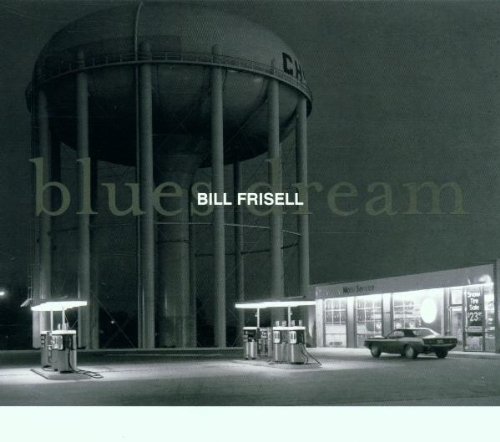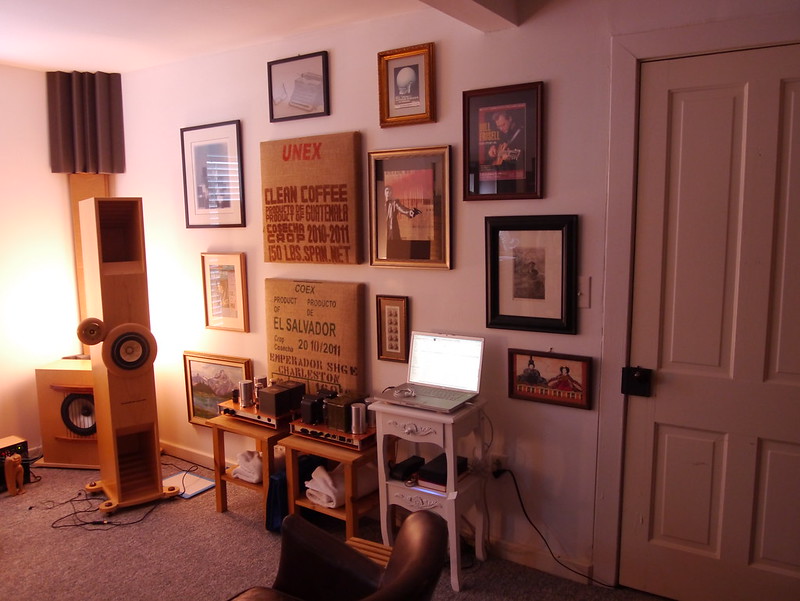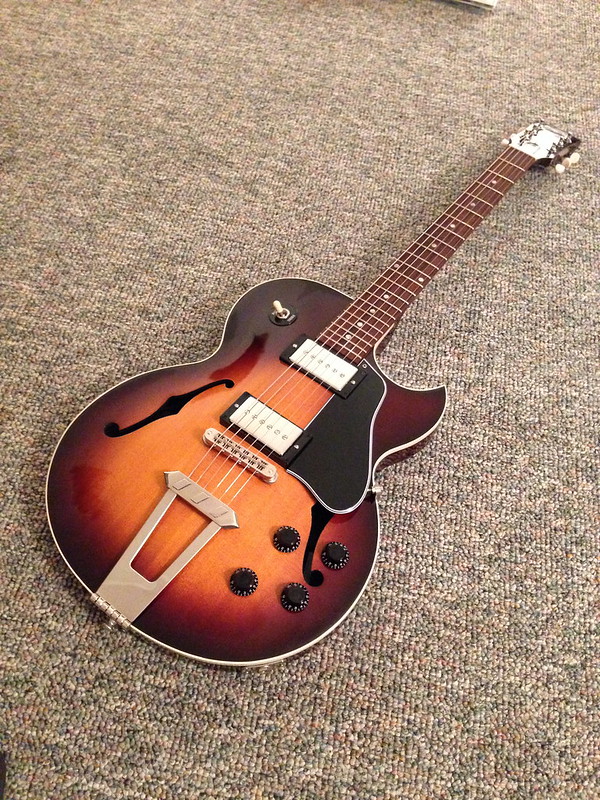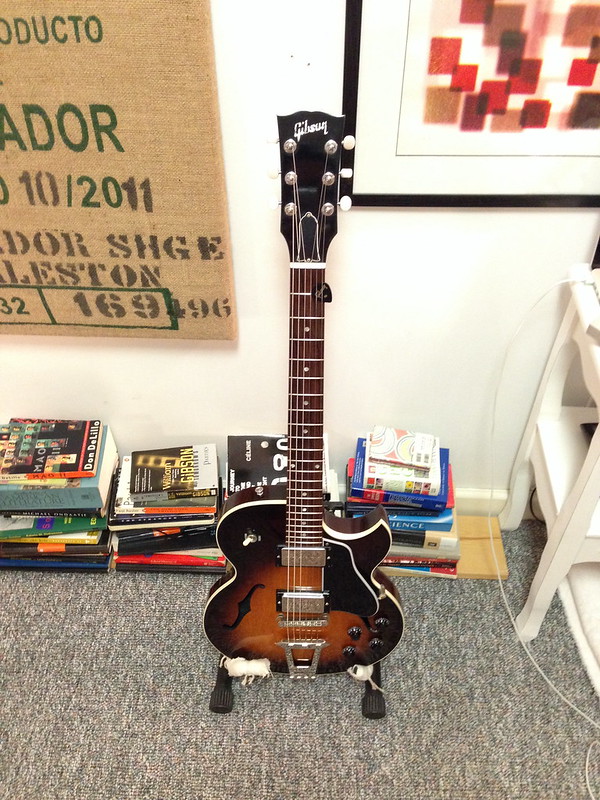-
Posts
92 -
Joined
-
Last visited
Content Type
Profiles
Forums
Events
Posts posted by tjkurita
-
-
-
Miles Davis: On the Corner

-
Bill Frisell: Blues Dream

-
 1
1
-
-

so this is pretty magnificent on the new speakers
dang.
Going to listen to this right now on my own speakers!
-
Ron Miles: Quiver. Really thoroughly enjoying this.

-
Nick Cave and the Bad Seeds: No More Shall We Part:

-
Those Muons are some of the coolest looking speakers I've ever seen! I'd love to have a super modern apt. in London or something with those as the centerpiece!
-
Thanks Dusty! Good info. Those KEFs are high priced! $30K... Crossed at 350hz and 2.3K so maybe those drivers are not doing too much work. 91db at 4ohms with 3.2ohm minimum. Very different from my current philosophy. I wonder how people end up with different philosophies when it comes to systems. Something like this is so much different from the Magico just one post above it. Of course the price is a lot different. But there are plenty of half million dollar cone systems that are similar in philosophy to the KEFs.
The burlap square things are ATS damping panels. They are standard fiberglass sound absorbing material in a wood frame covered in coffee sacks. I have four of those two X two panels in the room. I am seriously considering getting into diffusion, but I like the sound now, so I don't really care that much.
-
 1
1
-
-
I like the looks of that! A bit busy. But it looks a lot better than the crappy foam bass traps I've got set up. Using box frames to add a bit of knobbliness to the wall seems like a good idea too. I am a big advocate of room treatments where possible. I guess this system places the "dead" end of the room on the speaker side. I've got my "dead" side of the room at the listening position side.
Having said all that, what real effect is there when the majority of the sound is likely being handled by what looks like a single 3" driver? Maybe those 10" on the sides of the speakers are crossed at around 100hz? Unless the perspective is really strange, those front-facing drivers look like something out of a mini-monitor...
I do have a good bit of artwork up on the largest wall surface. I don't know what difference it makes as I am not using anything as extreme as this guys box frames (which may well include damping material inside).

-
 2
2
-
-
Hopefully, my end-state speaker system will look something like this:
5-way system. What looks like 80hz bass horn, 250hz and 800hz spherical tractrix, and super tweeter with two tapped horns (the towers) for sub bass down to 20 hz.

-
I would also like to hear what $40k a pair compression drivers sound like.
Definitely! Big horns and compression drivers are where it's at for me. Just need to get it together. Here is OMA's flagship:

-

Mazzy Star: Among My Swan.
-
I don't know if you are still on the search for a cool-running integrated for a bedroom system, but for around $1K ($1.3K new, ~$800 used), I think an Audiosector integrated is one of the best choices. 50WPC gainclone built extremely well, far better than the 47 Labs build quality. I don't have one, but I do have his Patek SE, which is an upscale, 2-chassis, power-amp version. It has a really great sound. Neutral, clean, pure, fast. I love mine. The integrated has a very small footprint (perfect for a bedroom), enough power, and runs very cool.
Here is the 6Moons review of the Patek SE.
Here is a review of the integrated. -
Happy birthday, Al!!
-
-
Fuck. This thread is really depressing. Some of my favorites just in the last couple of weeks.
-
This is a bummer... RIP Spengler.
-
The best travel size guitar I have played. Get yourself a Calton case for it and you can check it when you travel.
-
Oh just get a Tube Screamer...
I actually have the Digitech RP10, but I've always hated the distortions on those older models. I also have the more recent TC Electronics Nova system, which is digitally controlled analog ditortions, which I'm much more alright with. The Alesis Quadraverb GT also has an analog section, which I love. But those are the only two I know of that do their distortions analog-ly, and I want a wider palette. I'm sure there are other good ones, but when you're talking tone, most advice I get starts with "oh just get a <umptyump> pedal." I haven't given up -- on the contrary, I am not entirely unpleased with the direction with systems like the Fractal Audio Axe FX II. It's just a bit more dosh than I'm ready to lay out just yet, and I haven't seen it trickle-down yet.
-
 1
1
-
-
Thinking about returning the Gibson. Every time I take it out of the case it is almost a full step flat on all strings. Can't keep it in tune for anything. Not sure if it is a fault in the nut or bad tuners. I am getting some tinging and minimal changes when turner some of the tuners.
I've never been a fan of contemporary Gibson flat tops. I had two AJs, one mahogany and one rosewood. They both had sympathetic resonances right in the "F" region, causing dead spots on the fingerboard. As you get more experienced you will find this also and be sensitive to it to whatever degree. I am rather sensitive to dead spots. So I bought a flattop built by Steve Andersen in Englemann Spruce and Brazillian rosewood. It was Scott Nygaard's guitar for a long time and he played it in really well, practically no dead spots. The guitar is almost 25 years old now and sounds really open and dry. New guitars tend to be really tight sounding.
Check for sympathetic resonances in your guitar by humming into the soundhole. In a flattop, it is often in the "F" and "G" range. Really good luthiers can tune this spot to somewhere between notes. Anyway, hum into the guitar, using a bass note and increase the pitch until the entire guitar feels like it is resonating. Play this note on the fingerboard and you will notice that the sound seems kind of dead. This is due to resonances in the guitar cancelling the fundamental note. As the guitar gets played (A LOT) these resonances are alleviated. But new guitars are very susceptible. There are "guitar shakers" that can break in a guitar quicker, but they seem a little bit dangerous. edit: actually, that Tonerite thing looks REALLY cool...
As far as tuning goes, it might be because of new strings that your guitar is dropping out of tune. If it is consistent on all strings, it is likely the strings loosening up. After you put on new strings, try stretching them out. Those look like Grover tuners. Generally OK. Gibson klusons are possibly the worst tuners in the world. String binding at the nut is a common problem and can be fixed by any competent luthier or by yourself as you gain more experience.
-
Looks kind of like a larrivee. I wonder if they are related? I like the tortoise pick guard!
-
A bit larger, actually. The Les Paul is more narrow. If it was a woman, it would be a size 2. The 446 is more of a size 8. It is a similar size body to the old Gibson L6s:

-
Over a period of months/years (which, in the life of a guitar, is not long), it will burn into the nitro. See this website:
http://www.frets.com/FretsPages/Musician/GenMaint/Vinyl/vinyl.html
Frets.com is an excellent resource for the guitar owner. When I first discovered the site I browsed and researched it for hours. It gives great advice on every possible subject from every possible ability. This is a site dedicated more to the owner than the player.
Also, humidity is REALLY important. I have had fingerboard cracks happen in a guitar that I never took out of the house, never messed around with. The mistake I made was keeping it out on a stand, rather than in a case with a "damp-it." In my opinion, solid wood, fine acoustic guitars should ALWAYS be kept in the case when not playing or confined to an area where the humidity can be controlled. Plywood guitars, many of which sound and play just fine, by the way, are less susceptible to humidity changes.
That is a beautiful guitar. I am using a Hercules stand that holds it by the neck but it does rest on the back of the guitar on the rubbery surface.
-
Here are some shots of the 446 (solid, carved spruce top with a thicker profile to reduce feedback, mahogany back carved hollow):
Of course, in order to get the guitar running right you will need to swap out the tailpiece, tuners, and pickups!
I also strongly recommend you cover ANY rubber/synthetic-poly-whatever parts of your stands or hooks with cloth or microfiber. Over time, the rubber/poly can eat into the nitrocellulose lacquer of most guitars.









The Official Head-Case Photography Thread.
in Miscellaneous
Posted
X100S if you are willing to go fixed lens?